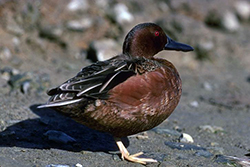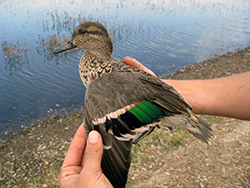The California Department of Fish and Wildlife (CDFW) has completed its annual waterfowl breeding population survey.


The California Department of Fish and Wildlife (CDFW) has completed its annual waterfowl breeding population survey.
Mallards, gadwall and cinnamon teal comprised 54 percent of the ducks observed, down 30 percent from last year. The number of mallards decreased from 263,774 to 198,392 (a decrease of 25 percent) and total ducks decreased from 417,791 to 396,529 (a decrease of five percent).
The most notable decrease occurred in the Sacramento Valley area, where mallards were estimated at a record low of 31,000 (73 percent below the long-term average).
Given the abundant precipitation, one might expect the numbers to be higher. In some parts of the state, it did indeed increase available habitat (uplands and ponds). But in many areas, last winter’s heavy rains largely resulted in deep, fast-flowing water, which is not ideal for dabbling ducks. Other reasons for low duck observations could include winter flooding of nesting habitat that normally remains dry, the late-season flooding of the rice fields in the Sacramento Valley and the conversion of rice fields and pastures to tree crops.
CDFW biologists and warden pilots have conducted this annual survey using fixed-wing aircraft since 1948. This year’s survey was conducted from April 3 through May 4 in the Central Valley, and May 9-10 in northeastern California. The population estimates are for the surveyed areas only, which include the majority of the suitable duck nesting habitat in the state. Surveyed areas include wetland and agricultural areas in northeastern California, throughout the Central Valley, the Suisun Marsh and some coastal valleys.
The full Breeding Population Survey Report can be found at www.wildlife.ca.gov/conservation/birds/waterfowl.
The majority of California’s wintering duck population originates from breeding areas surveyed by the U.S. Fish and Wildlife Service (USFWS) in Alaska and Canada. Those survey results should be available in early August. CDFW survey information, along with similar data from other Pacific Flyway states, is used by the USFWS and the Pacific Flyway Council when setting hunting regulations for the Pacific Flyway states, including California.